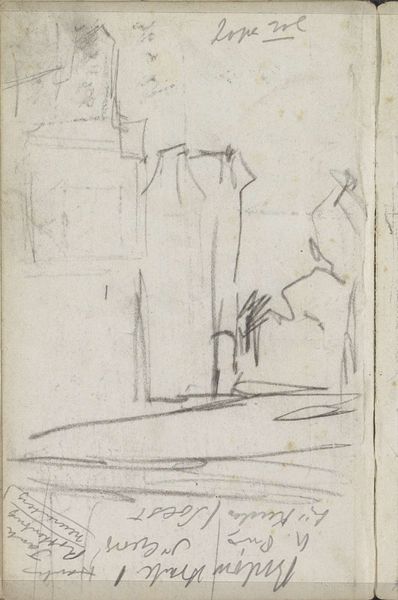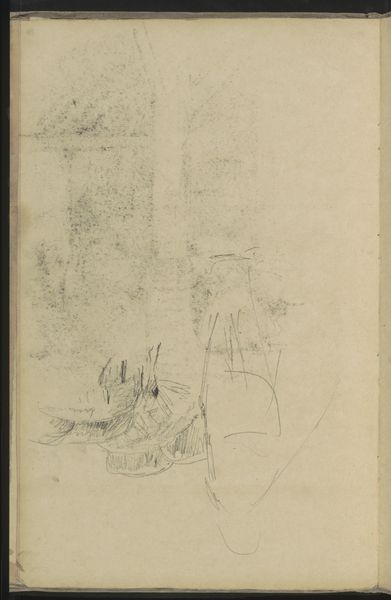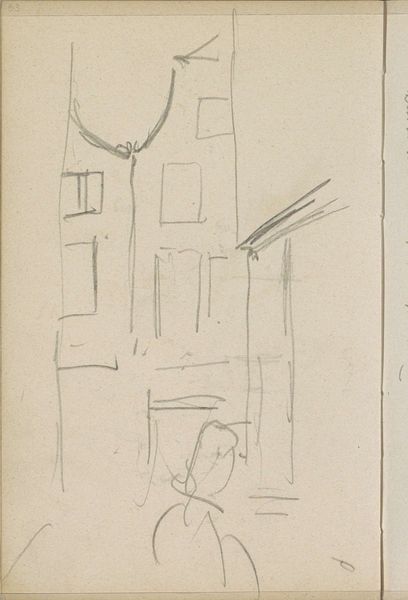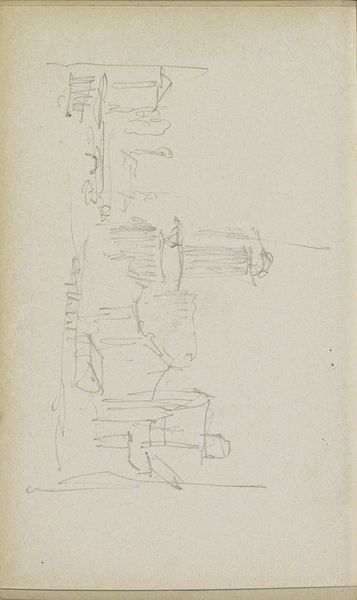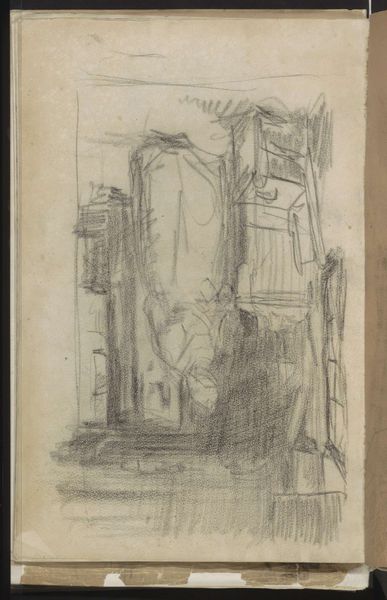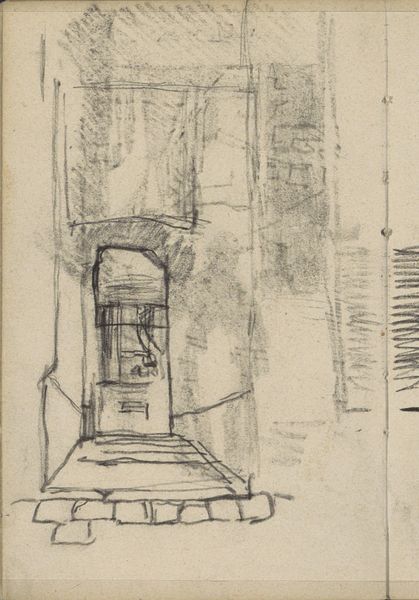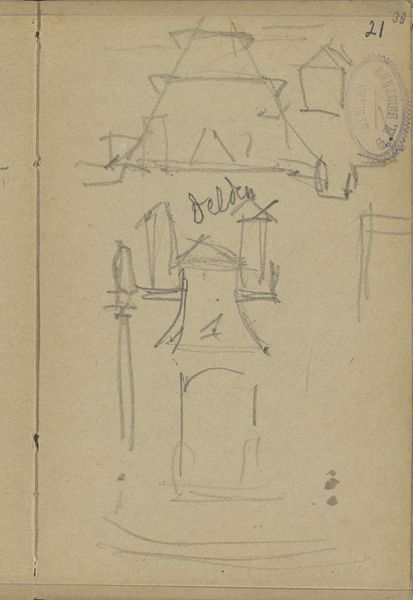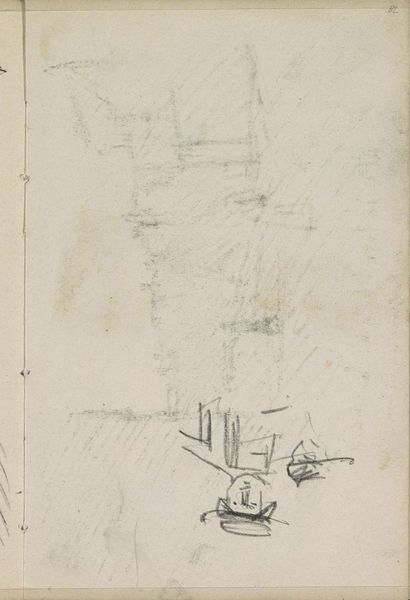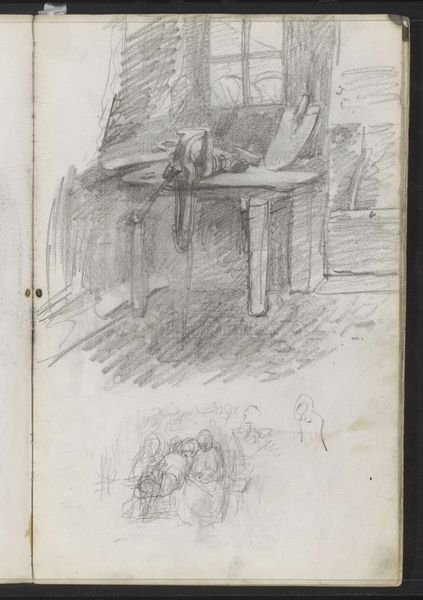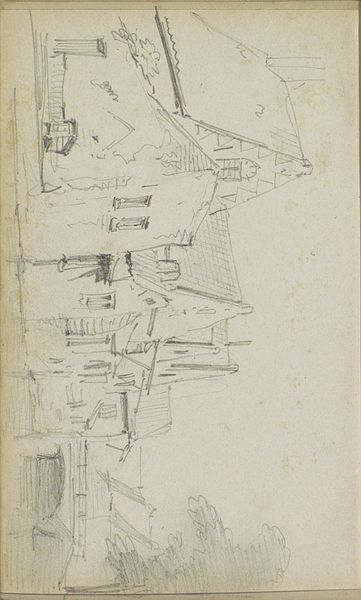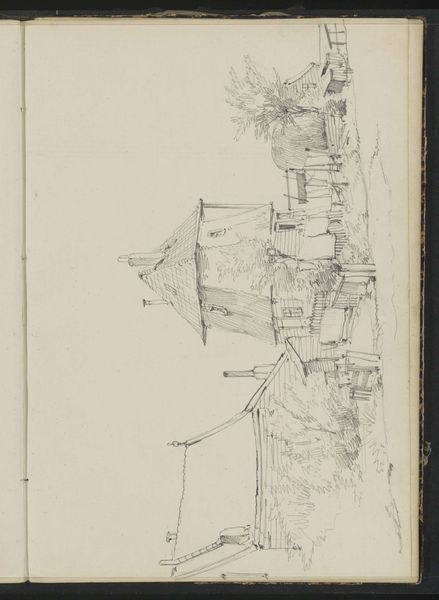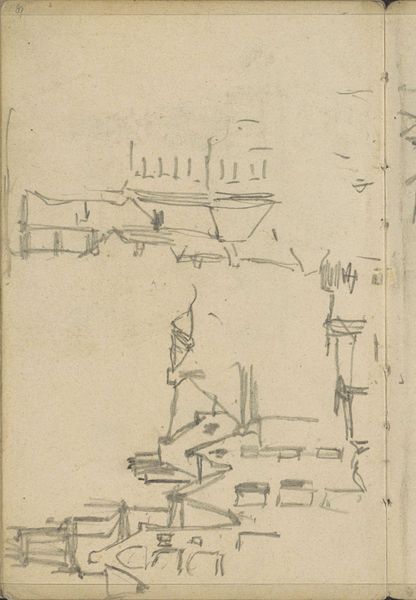
drawing, paper, pencil
#
drawing
#
paper
#
pencil
#
cityscape
#
realism
Copyright: Rijks Museum: Open Domain
Editor: Here we have "Stadsgezicht in Zuid-Holland," a pencil drawing on paper by George Hendrik Breitner, around 1882. The quick sketch feels almost journalistic. What social dynamics do you see represented, given that this is a street scene? Curator: The speed and apparent lack of finish actually tell us a great deal about Breitner's engagement with Realism and his interest in capturing the immediate, unvarnished truth of urban life. Consider the rapidly industrializing Zuid-Holland of the 1880s. Who is benefiting from this development, and who is being left behind? Editor: I see what you mean. There's a certain… uneasiness to it, despite being just a simple sketch. The buildings feel imposing, but the human element is less clear. Almost anonymous. Curator: Precisely. It prompts the questions: Who had the luxury to observe and sketch this scene, and whose lives were being shaped—perhaps exploited—by the very buildings depicted? Breitner, as an artist, was part of a changing social landscape, and this drawing hints at his complex position within it. How do you think he’s trying to represent that social imbalance? Editor: Maybe through the starkness and lack of detail for the people, which suggests a kind of dehumanization within the growing city. The buildings gain prominence, overshadowing the inhabitants. Curator: An insightful reading. This isn’t just a cityscape; it’s a visual commentary on power, observation, and the social forces shaping late 19th-century Holland. Hopefully this encourages us to see even sketches as loaded documents of a specific time and place. Editor: It definitely does! I'll never look at a quick sketch the same way again. Thanks for sharing that perspective.
Comments
No comments
Be the first to comment and join the conversation on the ultimate creative platform.
